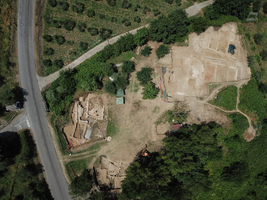

CORIGLIA Excavation Project
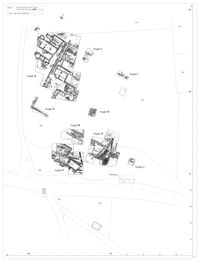
The Site
First discovered in the 1980s under land used for agricultural production, the site of Coriglia is home to an Etrusco-Roman settlement located 10 km northwest of the city of Orvieto, in the Umbria region of Central Italy. For nearly two decades, excavations at Coriglia have uncovered a complex assemblage of monumental structures that resulted from the persistent habitation of the site for over 1,000 years. The major occupation of Coriglia began with an Etruscan phase (ca. 7th century BCE) and reached its peak during the Roman Imperial period, though the site continued to be inhabited until the early Renaissance era.
The major features of the site include two large terraces, Etruscan and Roman habitation, bath complexes, water storage facilities, and a road, among several other monumental structures. The presence of several water management facilities like the two bath complexes suggest that water was moved and stored on a large scale at Coriglia, in part due to natural springs (hot and cold) formerly located on site. Structures such as a large subterranean barrel vaulted storage area likely supported the baths and surrounding architecture, and the continued presence of a central road indicates movement between the terraces over several hundred years. Evidence of continual habitation is indicated by the presence of Greek, Etruscan, Roman, and Medieval ceramics, marble revetment, architectural terracottas, small metal objects, fresco fragments, and mosaics. Most recently, an Etruscan-era kiln was discovered on site.
Current stratigraphic and archaeological evidence suggest the site functioned as a mansio, or rest area along major roads used by government officials and other important travelers, from the 2nd through 4th centuries CE. After this period, Coriglia was used as late antique site to process and recycle materials such as marble (for lime), ceramics, and glass. By the early Renaissance Coriglia took on a new agricultural function for growing olives trees and grape vines.
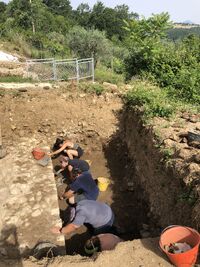
The Field School
Applications for the summer 2026 season of the Coriglia Excavation Project are open! The 2026 season will run from May 25 to June 23, 2026.
This international archaeological project is conducted in cooperation with the towns of Orvieto and Castel Viscardo, the village of Monterubiaglio, and the Soprintendenza per I Beni Archeologici dell’Umbria. This project is operated as both a scientific project and a field school where volunteers learn how to excavate an archaeological site. We accept applications from anyone who is interested in participating in the Coriglia field school, no experience necessary!
Field school participants will learn best practices in archaeological method and theory through first-hand experience in the field. Volunteers will have the opportunity to gain experience in diverse aspects of the archaeology by participating not only in excavations, but also in the cleaning, identification, and documentation of recovered artifacts in our on-site lab.
Our staff members are trained archaeologists who supervise the immediate excavations and offer educational opportunities such as visits to relevant nearby sites. Volunteers will be required to attend various lectures, museum tours, and site visits as part of their archaeological training. The project is also happy to provide opportunities for graduate students to develop thesis projects, publish papers, and present findings.
Please note that applications are only considered for those wishing to join the project for three weeks or longer.
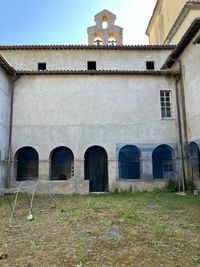
Accommodations and Program Fee
Program fees for the field school cover room, board (meals), tools, supplies, and transportation within Orvieto. Please note that flights to and from Italy and weekend travel costs are not included in the program fees.
Participants and staff stay in double or triple rooms in the Convento San Lorenzo in Vineis, a converted 15th century CE monastery just outside of Orvieto. Washing machines, bathrooms with showers, drying racks, Wifi, and other basic amenities are available at the convent. Breakfast, lunch, and dinner are provided Monday through Friday at the convent or on site.
Cost: $3,600 for all five weeks or $800 per week. The minimum required stay is three weeks.
An initial, non-refundable deposit of $500 will be necessary to hold your spot. Payment of the remaining program fee must be received by April 15, 2026. A link for digital payment will be sent out after notification of acceptance.
Various national organizations offer field school scholarships. Applications for the Archaeological Institute of America's Jane C. Waldbaum Archaeological Field School Scholarships are due March 1st, and CAMWS Excavation and Field School Awards on January 30th. If you are interested in applying to these or other scholarships please let us know!
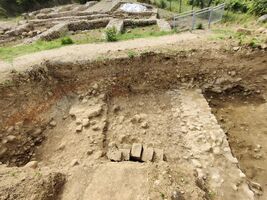
Apply Now!
The priority deadline for the 2026 season is January 15, 2026. Any applications received after January 15th will be considered if spaces remain.
Our Staff
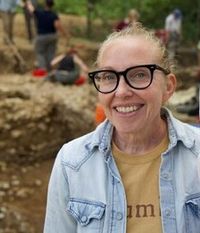
Field Director. PhD, Università degli Studi di Perugia
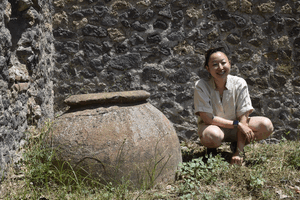
Scientific Director. Assistant Professor, Kansas City Art Institute
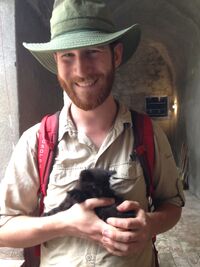
Assistant Director. PhD, University at Buffalo
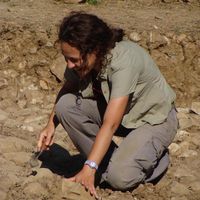
Assistant Field Director, Area Supervisor.
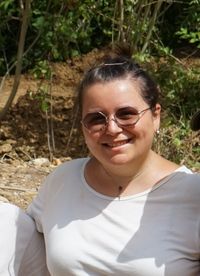
Lab Director. Rheinische Friedrich-Wilhelms-Universität Bonn
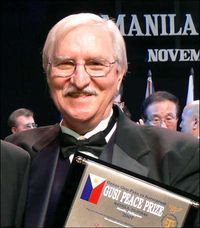
Founding Director, Professor Emeritus, University of Oklahoma
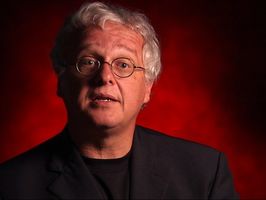
Director Emeritus. Professor Emeritus, Saint Anselm College
Get in touch
Feel free to reach out with any questions. We will respond as soon as we can.